
views
X
Research source
Although not as common as the Syrian hamster, Russian dwarf hamsters are becoming pretty popular pets, since they are easy and relatively inexpensive to care for.[2]
X
Research source
Learning how to care for your Russian dwarf hamster will help him live a happy and healthy life, and will help you become close friends with him.
Housing Your Russian Dwarf Hamster
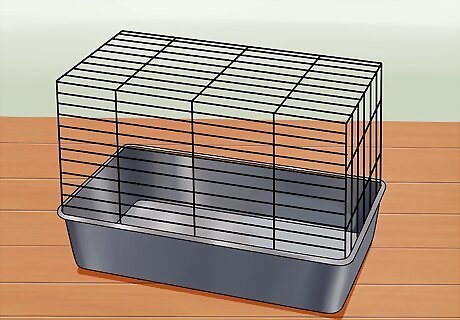
Choose a cage that is safe and easy to clean. A good cage for your hamster is one that keeps him safe and is easy for you to clean. A wire hamster cage with solid flooring is generally the best choice. The bar spacing in a wire cage should be less than one-half inch to prevent him from escaping. The wires should also be covered with a substance called PVC to prevent rusting. Make sure the cage flooring is smooth. Your dwarf hamster could get his feet stuck in wire flooring and possibly break one of his leg bones. If you have a cage with wire flooring, cover the flooring with a smooth material, such as cardboard or laminate flooring (available at a hardware store). Cages with colorful plastic tubes and tunnels are fun to look at, but can be very difficult to clean. In addition, your dwarf hamster could chew through the plastic. Clean your hamster’s cage and its components once a week with hot water. His bedding should also be replaced with each cleaning. Glass aquariums do not always circulate fresh air very well, which could lead to a high level of ammonia in the cage, which can be toxic to your hamster. Clean the aquarium regularly to prevent an ammonia buildup. Glass aquariums also lack good ventilation and may heat up rapidly if placed in direct sunlight.
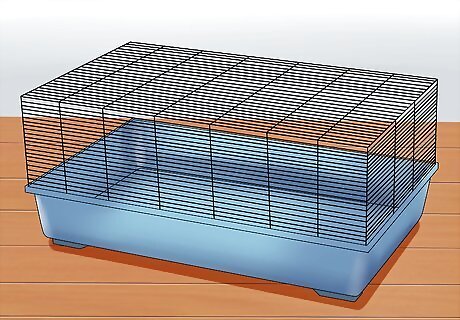
Select a large cage. The fact that your Russian dwarf hamster is small doesn’t mean you should put him in a small cage. In fact, the larger the cage, the better. Your dwarf hamster’s cage should be at least 60 cm (24 inches) long and 40 cm (16 inches) deep. A larger cage will not get dirty as quickly. With a large cage to call home, your dwarf hamster won't be as likely to get bored or agitated. When your dwarf hamster is happy, he's less likely to develop compulsive behaviors, such as bar chewing, that are bad for him. If you have more than one dwarf hamster in the same cage, a large cage will keep them from being aggressive towards each other. If you have chosen a glass aquarium to house your dwarf hamster, it should be at least 10 gallons.
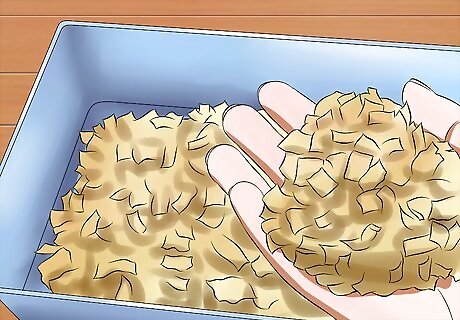
Cover the cage floor with bedding. Cage bedding has several benefits. It helps keep the cage clean by soaking up your hamster’s urine. Cage bedding also helps your hamster feel more at home. He'll be able to forage and burrow as much as he likes. Pine shavings would be a very comfortable bedding for your hamster. Do not use cedar bedding. Cedar oil can cause your hamster’s fuzz to fall out and his skin to crack. If his skin cracks, he can become dehydrated and very sick.
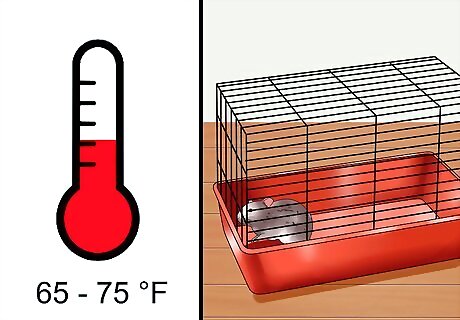
Pick a good location for your dwarf hamster’s cage. Place your hamster’s cage in a comfortable room (65 to 75 °Fahrenheit/18 to 24 °Celsius) where the temperature stays constant and there are no drafts. Within the room, do not place the cage near a heat source (e.g, fireplace, window with lots of sunlight) — this could warm up the cage too much, especially if it is a glass aquarium. A room that is too cold (below 60 °Fahrenheit/15 °Celsius) could make your hamster very sluggish, possibly to the point of hibernation. Because hamsters like to play at night, your bedroom would not be a good place for your hamster’s cage. The noise of his activity could keep you from getting a good night’s sleep.
Feeding Your Russian Dwarf Hamster
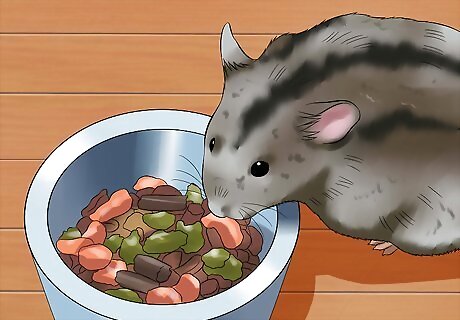
Select a commercial food for your dwarf hamster. Russian dwarf hamsters eat like other hamsters. Hamster food comes in pelleted form or as seed mixes. Your dwarf hamster should eat either one tablespoon of pellets or one to two teaspoons of seed mix per day. Pellets are very healthy and give your dwarf hamster something to chew on. Chewing on pellets helps your hamster keep his teeth filed down. Be careful with feeding a seed mix to your dwarf hamster — he may pick out and eat only the tastiest seeds in the mix, causing him to miss out on important nutrients. Seed mixes tend to be high in fat. A good quality commercial hamster food should contain at least 15 to 20% protein. Read the ingredient label to see how much protein is in the food.
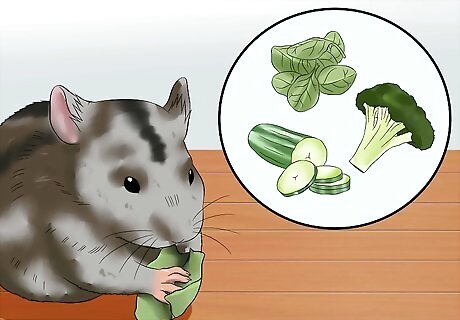
Add fresh vegetables to your dwarf hamster’s diet. Your dwarf hamster needs to eat more than just pellets and seed mixes. He should also eat some fresh vegetables that add variety and vitamins to his diet. Wash the vegetables thoroughly to remove pesticides. Give him fresh vegetables daily and make sure you remove the old ones so they don't molder in the cage. Leafy greens (spinach, Romaine lettuce) are great additions to your dwarf hamster’s diet. Other vegetables to feed your dwarf hamster include broccoli, cauliflower, and cucumbers. Add vegetables to your hamster’s diet very slowly — one small piece of vegetable once or twice a week. This will prevent him from getting diarrhea. Work up to feeding one small piece of a vegetable once a day.
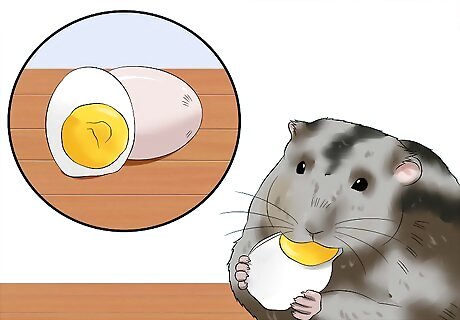
Include a protein source in your dwarf hamster’s diet. Protein is an important component of your dwarf hamster’s balanced diet. Good protein sources include boiled chicken or turkey, hardboiled egg whites, and canned and drained tuna. Vegetarian protein sources include tofu, flaxseed, and roasted soybeans. Add extra protein to your dwarf hamster’s diet once a week. Whichever protein source you choose, feed it to your dwarf hamster in one small piece at a time.
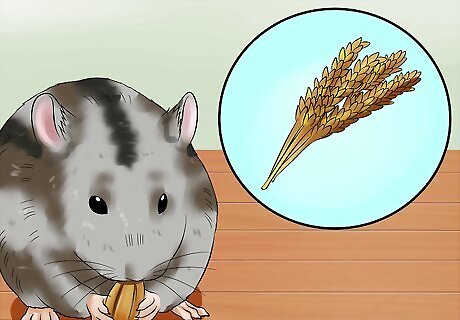
Feed your dwarf hamster grains. Whole grains (whole wheat toast, cooked rice, cooked pasta, unsweetened cereal) make great, healthy snacks for your dwarf hamster. Make sure the cooked rice or pasta is completely cooled down before feeding it to him. Crunchy toast and cereal would be good for your dwarf hamster to chew on. As with the other foods, feed the grains in small bits to your dwarf hamster.
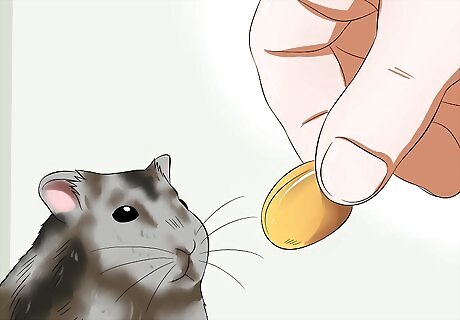
Incorporate treats into your dwarf hamster’s diet. Treats are another good way to add variety to what your dwarf hamster eats every day. Commercial hamster treats are available at your local pet store. Your pet store may carry “yogurt drops” for hamsters. These are very fattening, however, so your hamster should not eat them very often.
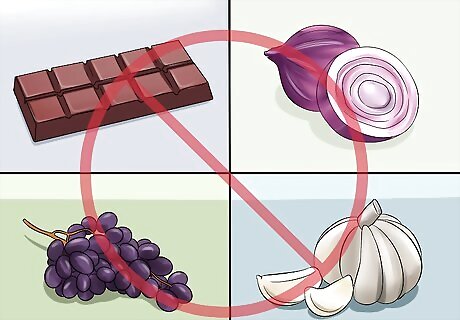
Avoid feeding your dwarf hamster certain foods. Russian dwarf hamsters are prone to developing diabetes, so high-sugar foods, such as fruits, should be avoided. Other high-sugar foods to avoid include corn, white bread, and white rice. Some foods—raisins, potatoes, onions, garlic, sprouts—are toxic to dwarf hamsters and should be avoided.
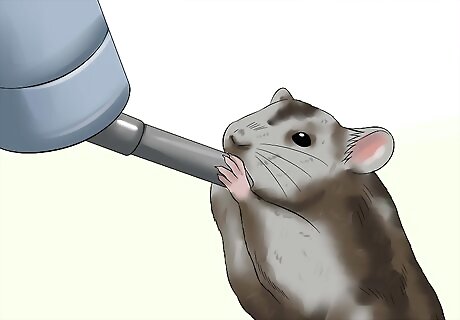
Provide your dwarf hamster with fresh water. Your Russian dwarf hamster will need constant access to fresh water. Place a water bottle with a stem and ball bearing in your hamster’s cage, and replace the water every day. Attach the bottle to a side of his cage at a height where he can easily reach the stem with his mouth. Do not put the water in a bowl. Your hamster would eventually turn his cage into a watery mess by drinking water from a bowl.
Enriching Your Russian Dwarf Hamster’s Environment
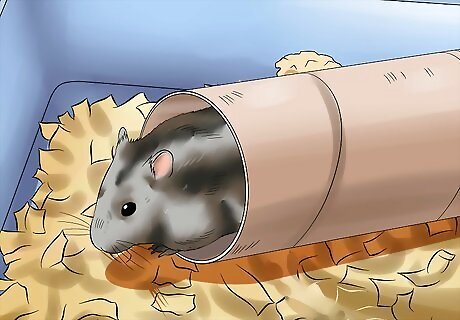
Place toys in your dwarf hamster’s cage. Environmental enrichment is an important way to keep your Russian dwarf hamster mentally and physically active. The more enriched his environment, the happier and healthier he will be, and the easier it will be to tame and handle him. Examples of toys include empty toilet paper and paper towel tubes. Plastic portable tubes also make great toys for your dwarf hamster. You can purchase them at your local pet store. Keep in mind, though, that he could chew through the plastic—replace the tube when he’s chewed enough to cause damage. You can also make your own hamster toys. Examples of homemade toys include ladders, hamster houses, and obstacle courses.
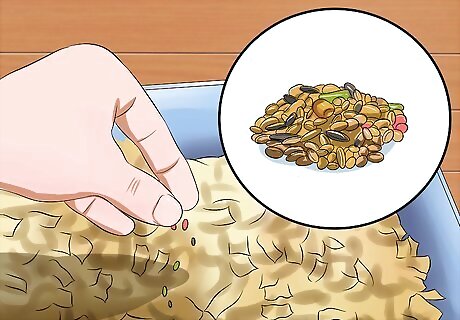
Hide his food. When it is time to feed your dwarf hamster, hide or sprinkle some of the food morsels deep in his bedding or within another object in his cage. This will encourage him to forage like he would in the wild. You may notice that your dwarf hamster will stash food in different areas of his cage as a snack for later.
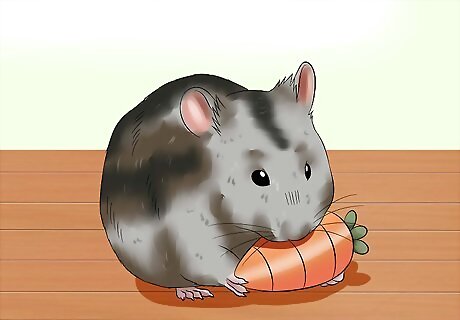
Give your dwarf hamster something to chew on. Chewing not only keeps your dwarf hamster busy, but also keeps his teeth filed down. Your dwarf hamster would love to chew on wooden cubes. To add more fun, the cubes have holes on multiple sides that he can crawl through. Your hamster could also chew on a bendable wooden toy, which is made of rounded pieces of wood that are banded together. You can also twist this toy type into different shapes to create walls, platforms, and houses that your hamster could play on or in. Give your dwarf hamster small, soft rawhide chews to chew on. Dwarf hamsters also like to chew on mineral blocks, which can last a long time. You can find chewing materials at your local pet store.
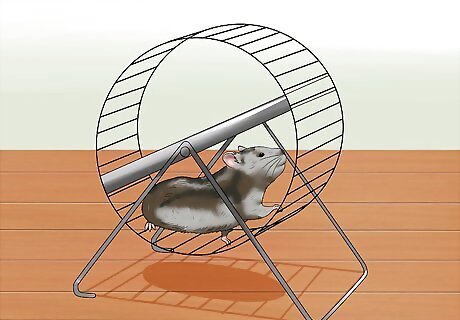
Give your dwarf hamster exercise equipment. Exercise helps your dwarf hamster stay in shape and mentally alert. An exercise wheel will allow him to get plenty of exercise within his cage. Make sure the exercise wheel is solid—your dwarf hamster could get his feet stuck in wires and potentially break a leg bone. If the exercise wheel starts to sound squeaky after a while, grease it with Vaseline where needed. An exercise ball will allow your dwarf hamster to exercise outside of his cage. Let him play in the ball for up to 30 minutes — not only will your hamster need a rest after about 30 minutes, but he may also need some fresh air. Let your dwarf hamster run in the hamster ball in different rooms, but never near a set of stairs or open water, like a pool. Plastic flying saucers are also good for your hamster. He can run on them like he runs on an exercise wheel.
Handling Your Russian Dwarf Hamster
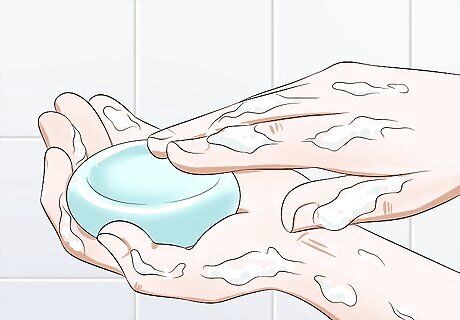
Wash your hands. Having clean hands will keep your dwarf hamster from biting you when you pick him up. If your hands smell like food, then he will essentially see your hand as food and bite it to try to get a taste. Wash your hands with unscented soap before handling your dwarf hamster.
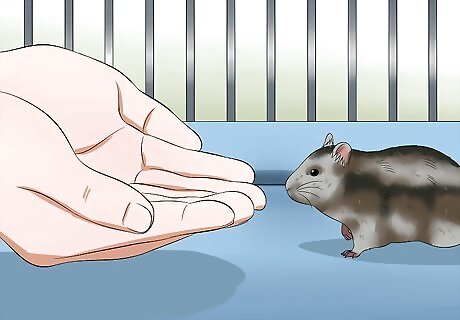
Make a scoop with your hands inside of his cage. Creating a scoop with your hands will keep your dwarf hamster supported as you lift him up. In addition, by placing your hands underneath your dwarf hamster, he will probably walk onto them. Do not reach down into your dwarf hamster’s cage to pick him up. Your hand will remind him of a large bird of prey swooping down to snatch him up — he will be terrified by this. Use slow and gentle movements when putting your hands in his cage. Always speak to your dwarf hamster before putting your hands in his cage. Your voice will help keep him calm as you go to pick him up. Do not chase your dwarf hamster around his cage to get him to step onto your hands. Let him come to you instead of the other way around.
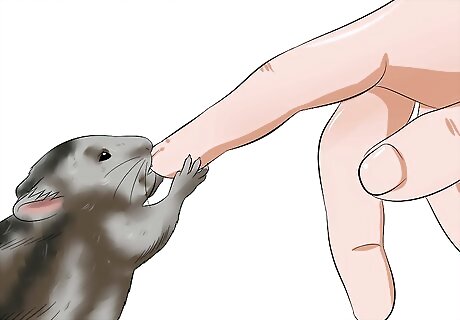
Determine if he is nibbling or biting. There are important differences between your dwarf hamster’s nibbling and biting when you pick him up. His nibbles are friendly and are his way of exploring your hand. Nibbles generally do not hurt. Bites are usually not friendly. They are your dwarf hamster’s way of telling you that he is stressed, scared, or just upset that you haven’t handled him enough. Hamster bites are usually faster than a nibble and are accompanied by a sound of distress, like a squeak. Bites can be painful. Whether your dwarf hamster bites or nibbles, do not jerk your hand away. This could frighten him and make him wary of you. Gently blowing in his face and saying a firm "no" should stop the biting behavior.
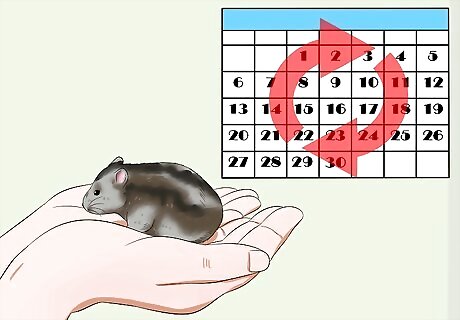
Handle your dwarf hamster every day. Russian dwarf hamsters have short memories, so your dwarf hamster may not remember that you just held him the day before. Handle him each day so that he will not become distressed or upset with not being held enough. Dwarf hamsters enjoy being handled. Do not let your dwarf hamster fall out of your hands when you hold him. Prevent this by supporting his body and keeping him close to you when you lift him out of his cage.















Comments
0 comment